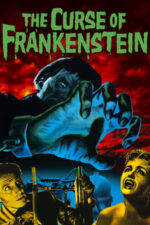Shadows, Secrets, and Stained Glass: A Deep Dive into Gothic Horror
Okay, let's talk about gothic horror. It’s more than just cobwebs and castles, though those certainly play a part! It's a mood, a feeling – that creeping sense of dread, the beauty in decay, the unsettling juxtaposition of elegance and darkness. Think of it as the cinematic equivalent of a really good poem; it lingers with you long after the credits roll.
What is gothic horror, though? At its core, it’s rooted in 18th-century literature – think Walpole's The Castle of Otranto, or Ann Radcliffe’s novels – and it thrives on atmosphere. We’re talking crumbling architecture (often religious), a sense of isolation, brooding landscapes, and characters wrestling with repressed desires and dark secrets. It's about exploring the psychological toll of these environments and situations.
You see echoes of this in so many films, even ones that don't explicitly label themselves as "gothic horror." Take Voice of Shadows, for example. The grand estate itself becomes a character – a symbol of wealth and power, but also a cage trapping its inhabitants within a web of obligation and unsettling rules. It’s not just about the inheritance; it’s about the psychological burden that comes with it, the way societal pressures can warp relationships and force people to compromise their values. That feeling of being trapped – that's pure gothic territory.
Then you have something like Dark Sister, which uses cutting-edge technology to amplify a classic trope: the doppelgänger. The visual effects are impressive, sure, but what really resonates is the exploration of identity and the fear of losing yourself. That’s a recurring theme in gothic narratives – the questioning of reality, the blurring lines between sanity and madness. It reminds me a little bit of David Lynch's work, actually; that unsettling feeling of something being off just beneath the surface.
And let's not forget films like Lavenza, which takes a darkly comedic approach to the genre. The premise – a woman trying to mold herself into her husband’s ideal – is inherently gothic in its exploration of societal expectations and female subjugation. It’s funny, yes, but also deeply unsettling because it highlights how damaging those pressures can be.
What's fascinating about gothic horror is how it adapts across time and cultures. The Golem, for instance, blends Jewish folklore with the genre’s established tropes to create something truly unique – a story of survival, agency, and the power of myth in a world steeped in oppression. And Raven’s Hollow cleverly uses Poe himself as a character, weaving his own sensibilities into a modern gothic mystery.
Even films like The Strange Case of Dr. Jekyll and Miss Osbourne, with its Victorian setting and exploration of hidden desires, tap into that core gothic sensibility – the darkness lurking beneath respectability.
Ultimately, gothic horror isn't just about scares; it’s about confronting uncomfortable truths about ourselves and the world around us. It's a genre that invites you to look beyond the surface, to embrace the shadows, and to find beauty in the unsettling. So next time you're looking for something atmospheric, thought-provoking, and maybe just a little bit creepy, give gothic horror a try – you might be surprised at what you discover.






































